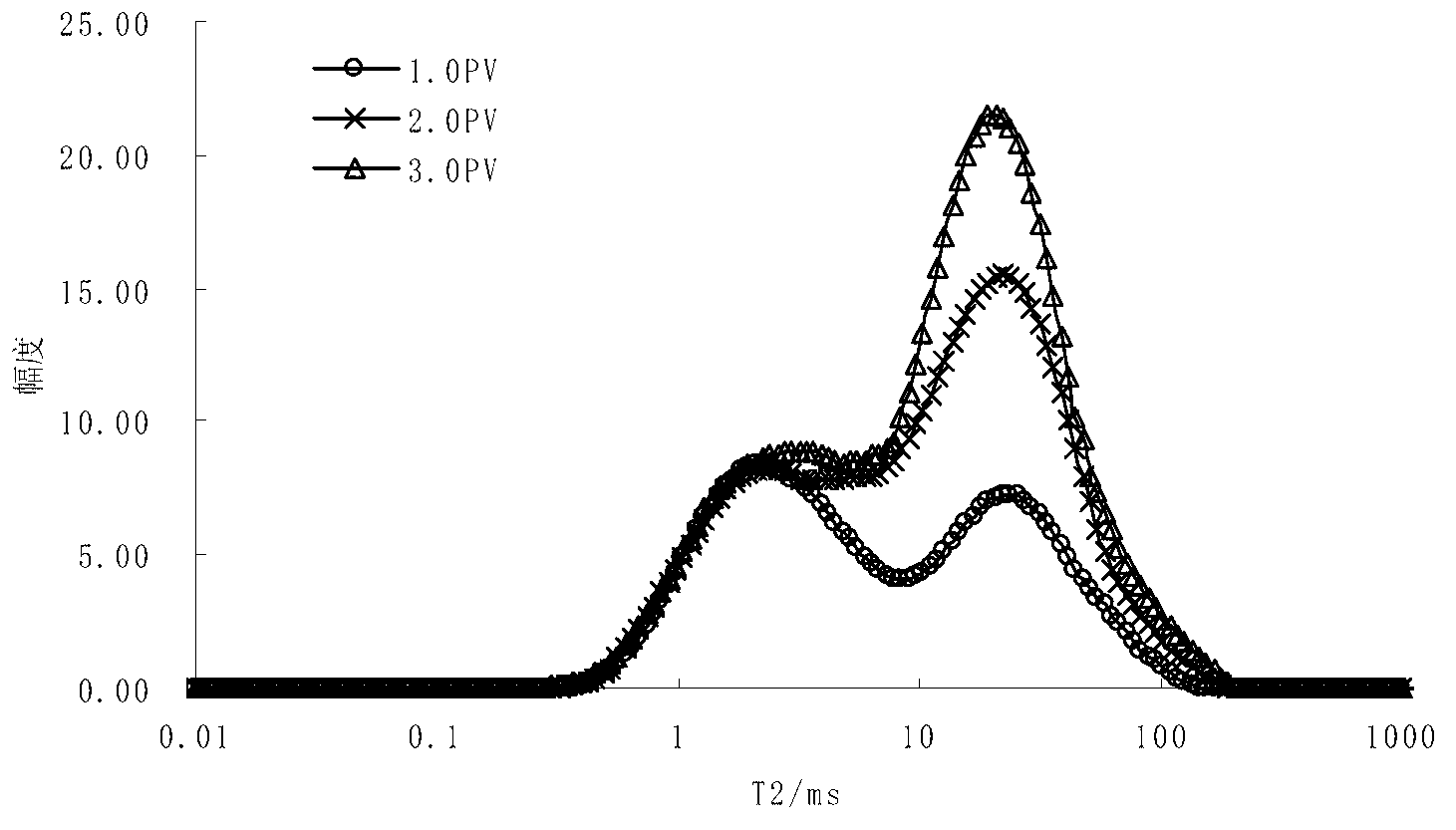Method for quantitative evaluation on pore throat usage law in oil and gas secondary migration process
A quantitative evaluation, oil and gas technology, applied in the field of oil and gas exploration and testing, can solve problems that are not involved in the quantitative evaluation of oil and gas pore throat production rules, etc., to achieve clear conclusions, rich information, and true experimental results
- Summary
- Abstract
- Description
- Claims
- Application Information
AI Technical Summary
Problems solved by technology
Method used
Image
Examples
Embodiment 1
[0030] A method for quantitatively evaluating the law of pore-throat production during secondary migration of oil and gas, comprising the following steps:
[0031] Step 1. Core selection and processing: A core column with a diameter of 2.5 cm and a length of 6.1 cm is drilled from the full-diameter core, washed with oil and dried, and the gas permeability of the core is 0.11×10 -3 μm 2 ;
[0032] Step 2. Preparation of working fluid: According to the water quality monitoring data of oilfield produced formation water, the water type is prepared as CaCl 2 , the salinity is the simulation formation water of 40526mg / L, according to the viscosity of the crude oil in the oil field, use kerosene and formation crude oil according to the ratio of volume 3:1 to prepare the experimental simulation oil with a viscosity of 2.4mPa.s;
[0033] Step 3: vacuumize and saturate the simulated formation water, calculate the core porosity to be 10.1%, and the pore volume to be 2.97ml;
[0034] S...
Embodiment 2
[0042] A method for quantitatively evaluating the law of pore-throat production during secondary migration of oil and gas, comprising the following steps:
[0043] Step 1. Core selection and processing: A core column with a diameter of 2.5 cm and a length of 5.95 cm is drilled from the full-diameter core, washed with oil and dried, and the gas permeability of the core is 0.35×10 -3 μm 2 ;
[0044] Step 2. Preparation of working fluid: According to the water quality monitoring data of oilfield produced formation water, the water type is prepared as CaCl 2, the salinity is the simulation formation water of 40526mg / L, according to the viscosity of the crude oil in the oil field, use kerosene and formation crude oil according to the ratio of volume 3:1 to prepare the experimental simulation oil with a viscosity of 2.4mPa.s;
[0045] Step 3: vacuumize and saturate the simulated formation water, calculate the core porosity to be 12.1%, and the pore volume to be 3.26ml;
[0046] S...
PUM
 Login to View More
Login to View More Abstract
Description
Claims
Application Information
 Login to View More
Login to View More - R&D
- Intellectual Property
- Life Sciences
- Materials
- Tech Scout
- Unparalleled Data Quality
- Higher Quality Content
- 60% Fewer Hallucinations
Browse by: Latest US Patents, China's latest patents, Technical Efficacy Thesaurus, Application Domain, Technology Topic, Popular Technical Reports.
© 2025 PatSnap. All rights reserved.Legal|Privacy policy|Modern Slavery Act Transparency Statement|Sitemap|About US| Contact US: help@patsnap.com



